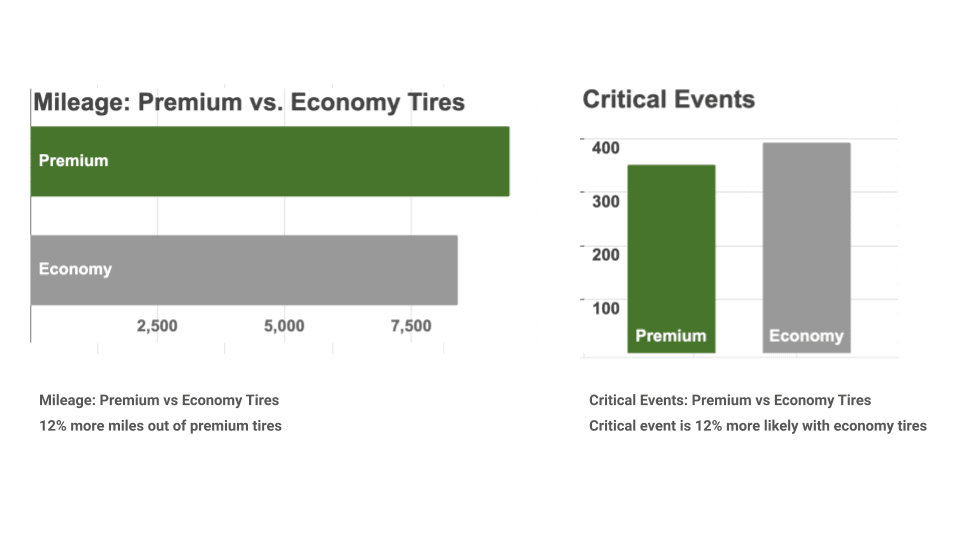
Customer spotlight: Enterprise Fleet Management recently conducted an Electric Vehicle Suitability Assessment (EVSA) using aggregated data from Geotab. The study revealed that approximately 13% of their vehicles could be effectively replaced by EVs today. This transition alone could result in a remarkable reduction of 194,000 tons of CO2 emissions over four years.
Title
This includes determining things like, What measurements affect the likelihood of a slow leak or a puncture or decreased mileage? Understanding and optimizing the miles of data is a challenge for fleet managers. We’ve analyzed data from 375 billion tire rotations and from over 200 million tire miles. Our analysis has revealed insights that truck fleets of all sizes are finding useful for cost savings and safety improvements. Let’s look at some of the insights we’ve uncovered and how you can use them to optimize your fleet.

Pressure Points
Fuel Efficiency + Pressure: Boost the fuel efficiency of your fleet by increasing cold pounds per square inch (PSI) in tires. We analyzed a fleet with twenty vehicles over three months. We saw an almost 10% miles per gallon (MPG) improvement when the cold PSI was increased by 17.5% (based on an average 8 MPG for the fleet). Conversely, an extra 300 gallons were added to fuel consumption when driving 62,000 miles at 8% below the recommended pressure. High Temperature + Pressure: Keeping your tires well-inflated is important for three reasons: it is safer, makes tires last longer, and reduces downtime. In delivery service fleets (or DSPs), the front and back tires need different amounts of air because the rear axle carries more weight. When these recommendations are not followed or are misunderstood, tires may not be inflated correctly after a tire rotation. If tires are not inflated properly (like below 80% of the recommended pressure), they wear out faster. Our studies on various fleets showed that tires that got too hot (over 180°F) and were under-inflated by more than 10% needed replacing more often. This can be costly and risky. It costs about $120 to retread a tire and between $600 and $1,200 to buy a new one.


Premium vs Economy Tires - Critical event is 12% more likely with economy tires
